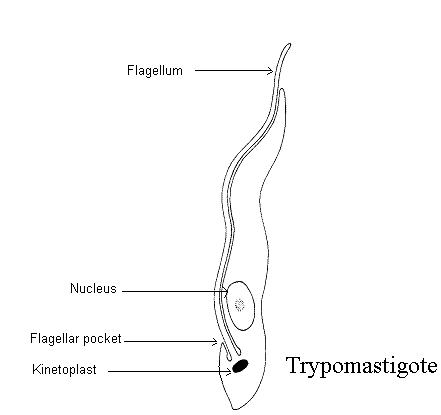Difference between revisions of "Trypomastigote"
From Knoesis wiki
Cotent-admin (Talk | contribs) m |
Cotent-admin (Talk | contribs) |
||
| Line 1: | Line 1: | ||
| − | Trypomastigote is an extracellular "non-replicative" form of a parasite. It is a leaf-like form with undulating membrane and flagellum that emerges through a flagellar pocket and runs the whole length of the cell. A large kinetoplast is found at the base of the flagellum. Trypomastigote is found in the bloodstream of infected vertebrate host. | + | Trypomastigote is an extracellular "non-replicative" form of a parasite. It is a leaf-like form with undulating membrane and flagellum that emerges through a flagellar pocket and runs the whole length of the cell. A large kinetoplast is found at the base of the flagellum; i.e., posterior end of the cell. Trypomastigote is found in the bloodstream of infected vertebrate host. |
[[image: Trypomastigote.GIF]] | [[image: Trypomastigote.GIF]] | ||
Revision as of 15:42, 7 July 2009
Trypomastigote is an extracellular "non-replicative" form of a parasite. It is a leaf-like form with undulating membrane and flagellum that emerges through a flagellar pocket and runs the whole length of the cell. A large kinetoplast is found at the base of the flagellum; i.e., posterior end of the cell. Trypomastigote is found in the bloodstream of infected vertebrate host.
Reference: 1) http://dna.kdna.ucla.edu/parasite_course-old/Default.aspx
Seen in Trypanosoma cruzi and Trypanosoma brucei. Can be either metacyclic (in T. cruzi), procyclic, or blood stream form (both in T. brucei).
